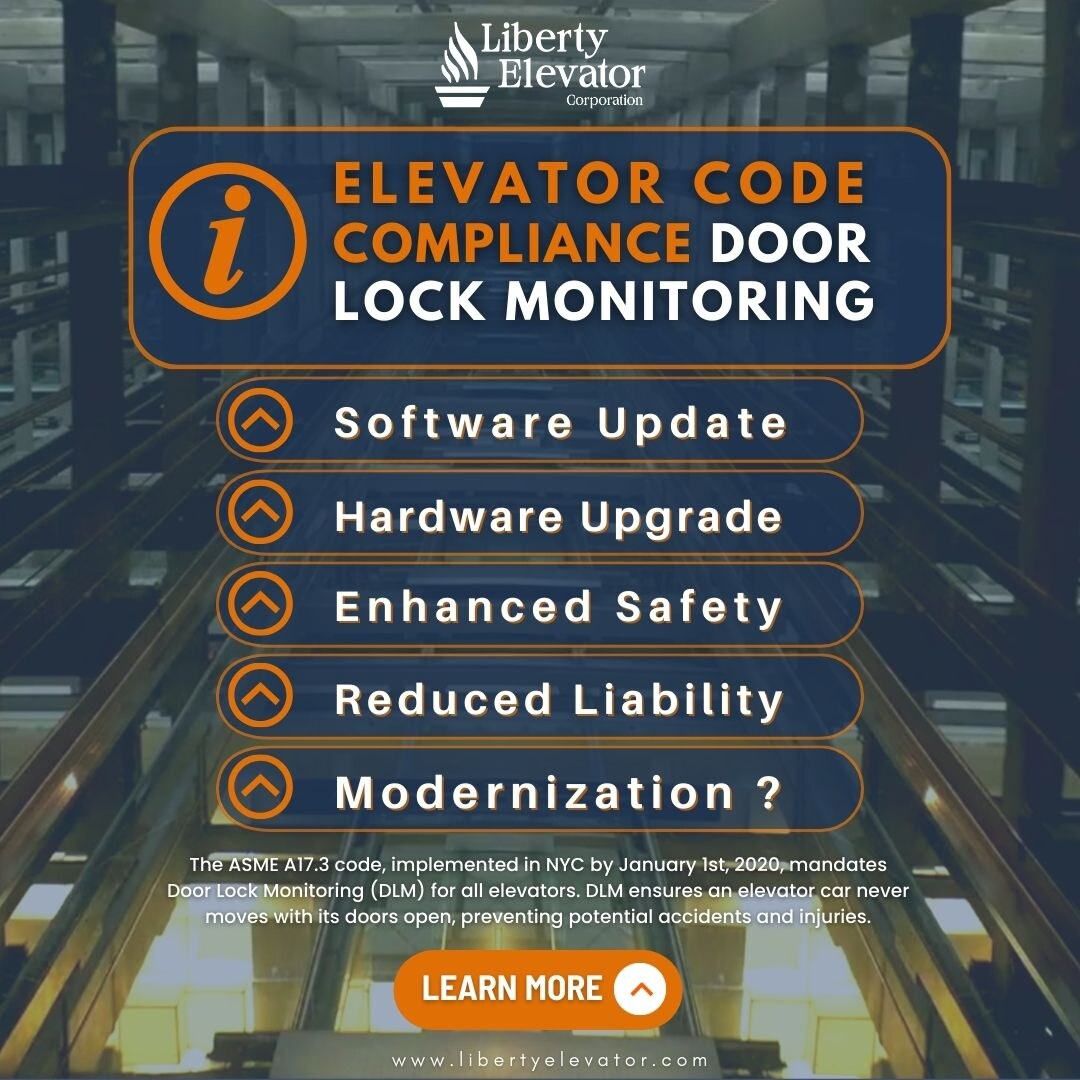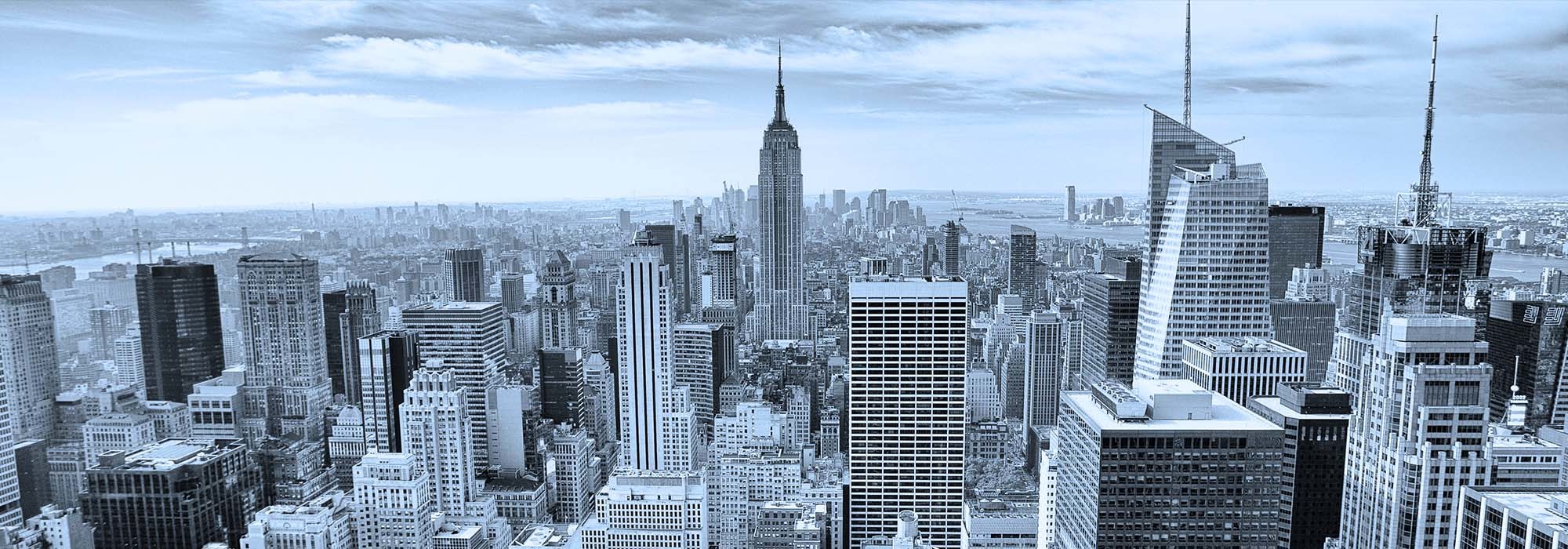Is Your NYC Elevator Code Compliant? A Guide to Door Lock Monitoring (DLM)
Imagine rushing to catch an elevator in your NYC building, only to find it red-tagged and out of service. This scenario could become a cruel reality for building owners who don’t address crucial elevator code updates.
Ensuring the safety of your building's occupants is paramount. This includes keeping your elevators up to date with the latest code requirements. In New York City, a crucial regulation known as Door Lock Monitoring (DLM) has been in effect for elevators since January 1st, 2020. Unfortunately, many property owners have neglected to place this mandatory upgrade as a priority and are being flagged in violation of this safety code.
This blog post dives into the importance of DLM compliance, explores solutions for existing elevators, and highlights an upcoming code change that property owners need to be aware of.

The Importance of Door Lock Monitoring
Now imagine stepping into an elevator, only to have it lurch upward with the doors still open. This scenario, while terrifying, is a potential reality without DLM. This safety feature prevents elevator movement when the doors are not properly secured. Implemented through ASME A17.3 code, DLM ensures a closed and secure door before an elevator starts moving.
DLM systems work by constantly monitoring the communication between sensors in the elevator car and landing doors. These sensors complete an electrical circuit only when the doors are fully closed, sending a signal to the controller to allow movement. This redundancy ensures the elevator doesn't move with open doors, preventing potential accidents.
Why is DLM crucial?
- Enhanced Safety: DLM minimizes the risk of accidents that could occur if an elevator moves with open doors. This protects passengers from falls, injuries, and potential entrapment.
- Reduced Liability: Non-compliance with code regulations can expose property owners to significant legal and financial liability in the case of accidents.
- Fines and Penalties: The NYC Department of Buildings (DOB) can issue fines for non-compliant elevators, potentially leading to "Red-Tagging," which takes the elevator out of service.
Understanding Door Lock Monitoring
DLM works by continuously monitoring the elevator's door position. Sensors within the car door and landing door interlock create an electrical circuit when the doors are fully closed. Only after this circuit is complete does the elevator controller receive the signal to initiate movement. This simple yet effective system ensures safe and controlled elevator operation.
NYC DLM Notice: Link
Compliance Solutions for Existing Elevators
While the 2020 deadline has passed, numerous elevators in NYC remain non-compliant with DLM. Here's what property owners can do:
- Schedule a Professional Inspection: A qualified elevator contractor can assess your existing system and determine the necessary upgrades to achieve DLM compliance.
- Software or Hardware Updates: Depending on the age of your elevator controller, a software update or a hardware modification might be sufficient for compliance.
- Modernization: In some cases, modernizing the elevator controller and door equipment might be the most cost-effective solution in the long run. Modernized elevators often come with DLM pre-installed and offer additional safety features and improved performance.
It's important to note: This information serves as a general guideline. A certified elevator contractor should always perform a thorough inspection to verify your elevator's current code compliance status and recommend the most suitable upgrade path.
The Next Elevator Code Deadlines:
Dual Plunger Brake / Unintended Car Movement (UCM) Building owners in NYC should be aware of another upcoming code change. By January 1st, 2027, elevators must comply with Appendix K3 and Rule 3.8.4.1 of the NYC DOB Building Code. This regulation aims to address Unintended Car Movement (UCM) and Ascending Car Overspeed (ACO) concerns.
Emergency Phone / Two Way Communication New elevator communication codes, including ASME A17.1/CSA B44 2019, are being implemented to ensure passengers have a reliable way to call for help in emergencies. The new codes emphasize clear communication between passengers and emergency personnel, especially for those who are deaf, hard of hearing, or speech-impaired.
Taking Action: Ensure Elevator Safety and Code Compliance
When considering code compliance, early planning and consultation with a qualified elevator professional are crucial to ensure a smooth transition before the mandated deadline.
Don't wait until the last minute! Here's a call to action:
- Schedule a Free Consultation: Contact a reputable elevator company for a free assessment of your elevator system. They can determine your compliance status and recommend the best upgrade options for DLM and the upcoming UCM/ACO code changes.
- Allocate Budget: Factor in potential upgrade costs into your building's budget to avoid financial strain when the deadline approaches.
- Prioritize Safety: Investing in elevator upgrades is an investment in the safety of your tenants and building occupants.
By proactively addressing code compliance, you can ensure a safe and reliable elevator system for your building, minimize potential legal and financial risks, and potentially enhance the value of your property. Remember, a well-maintained and up-to-code elevator system fosters a sense of security and peace of mind for everyone who uses it.
Liberty Is Your DLM Expert
Regardless of whether you are still working backwards to the 2020 compliance deadline, or are being proactive and also thinking ahead to 2027, you should move quickly and consult with Liberty Elevator Corporation on how best to address the situation. For the NYC elevator industry, the countdown to compliance is always underway, and it can take up to six weeks just to obtain the necessary city permits to proceed. Waiting much longer could risk failure to meet the compliance requirements and open you and your property to fines, restrictions and liability.

